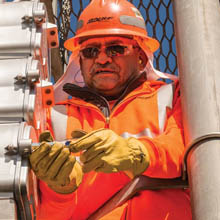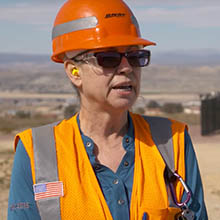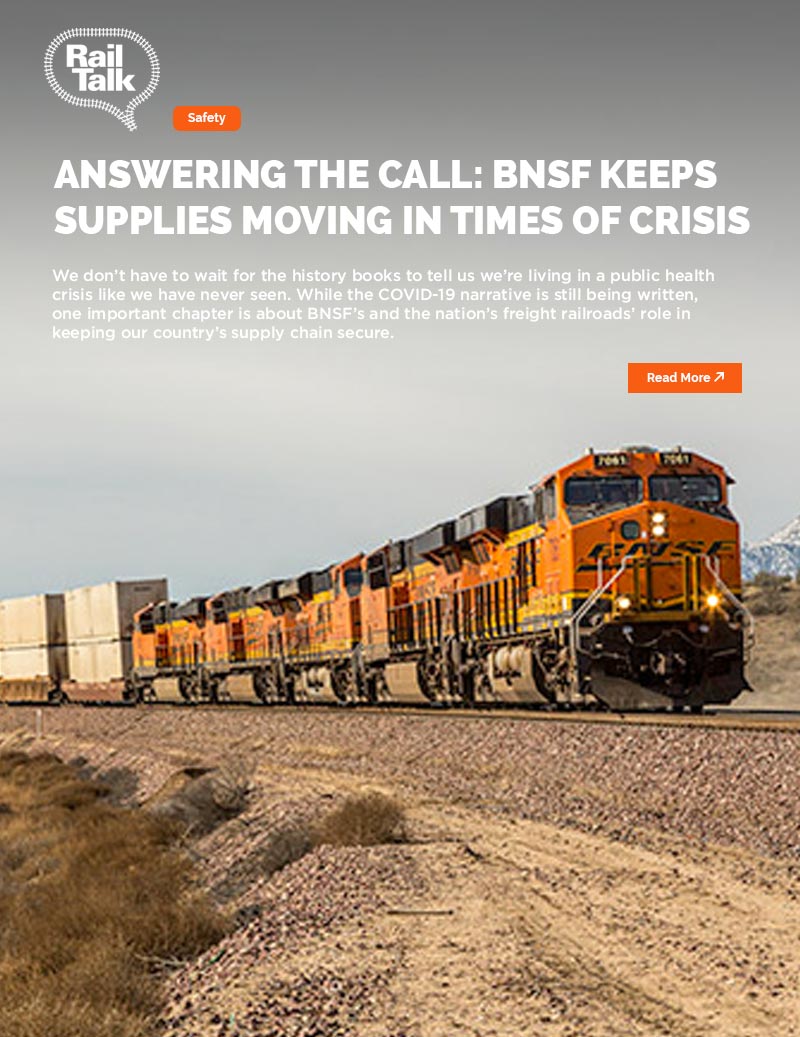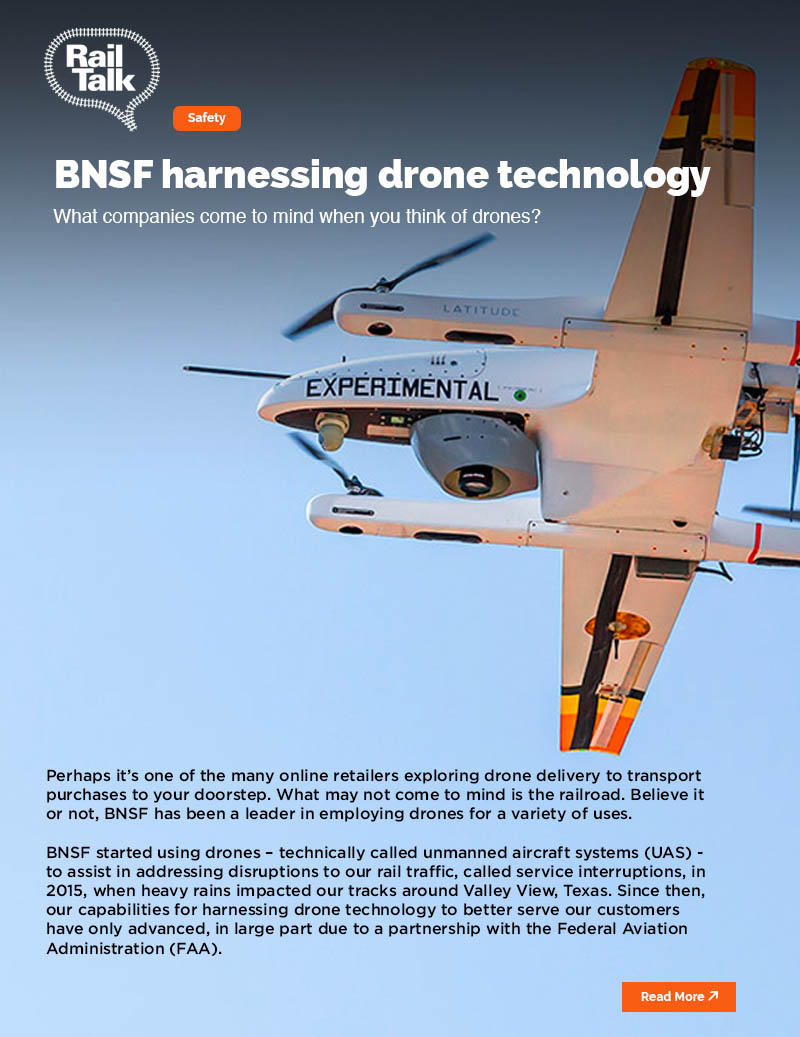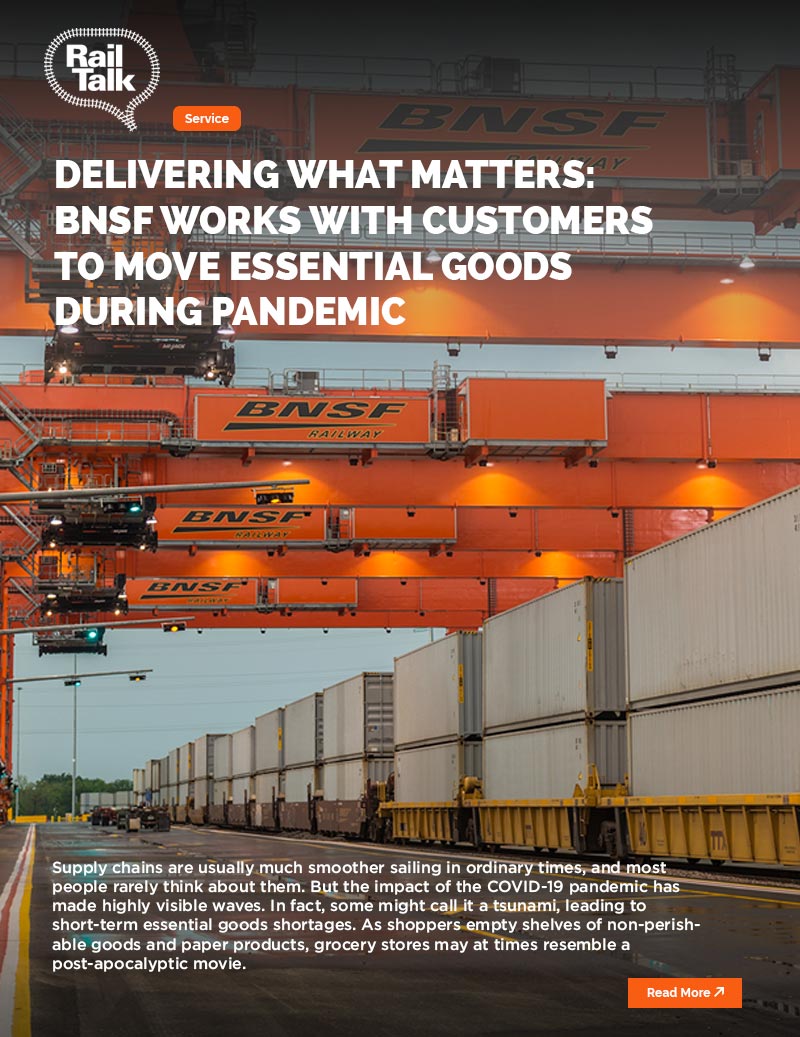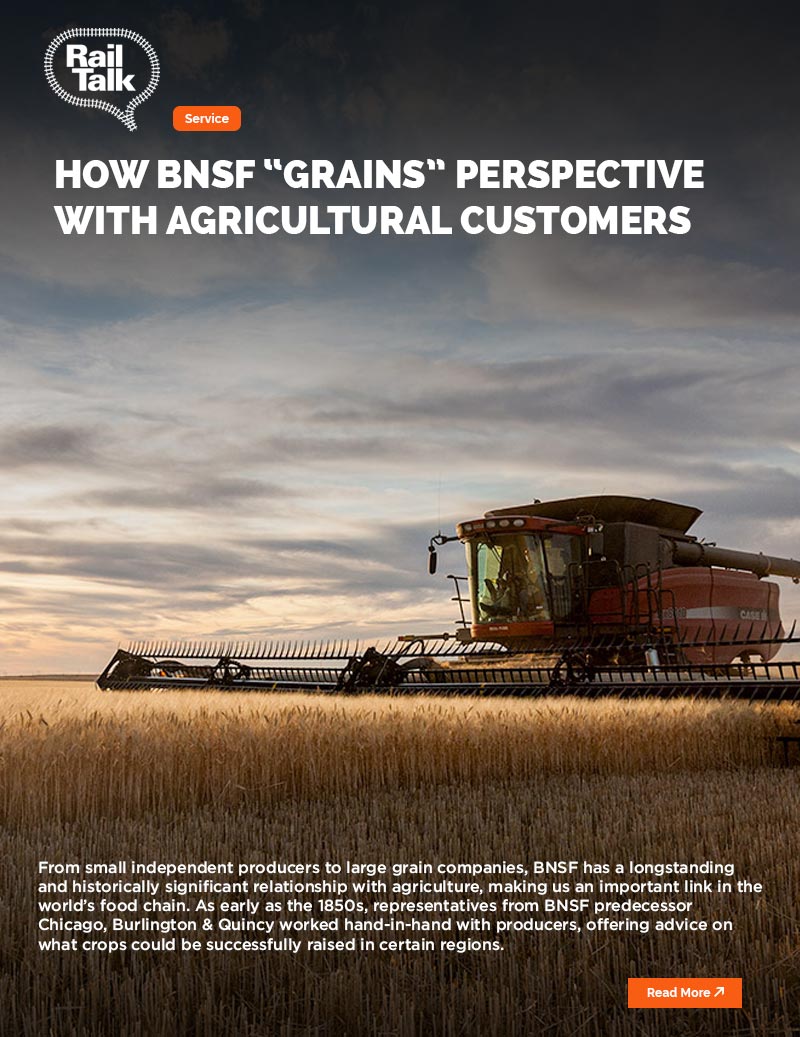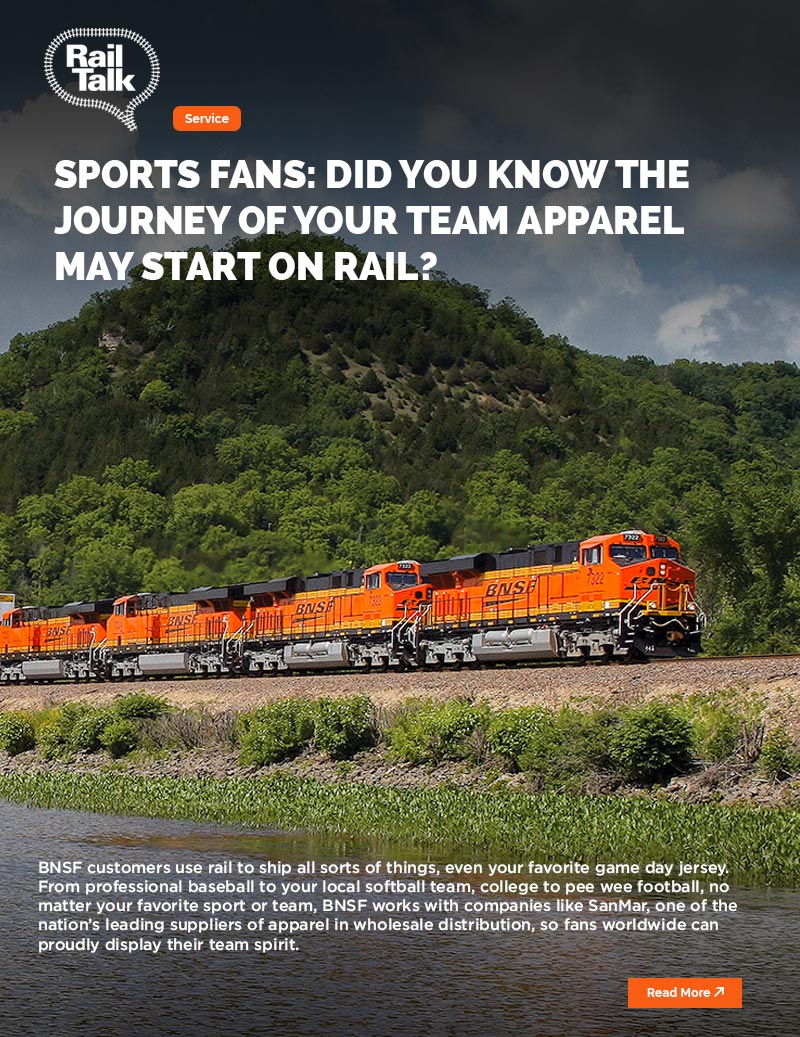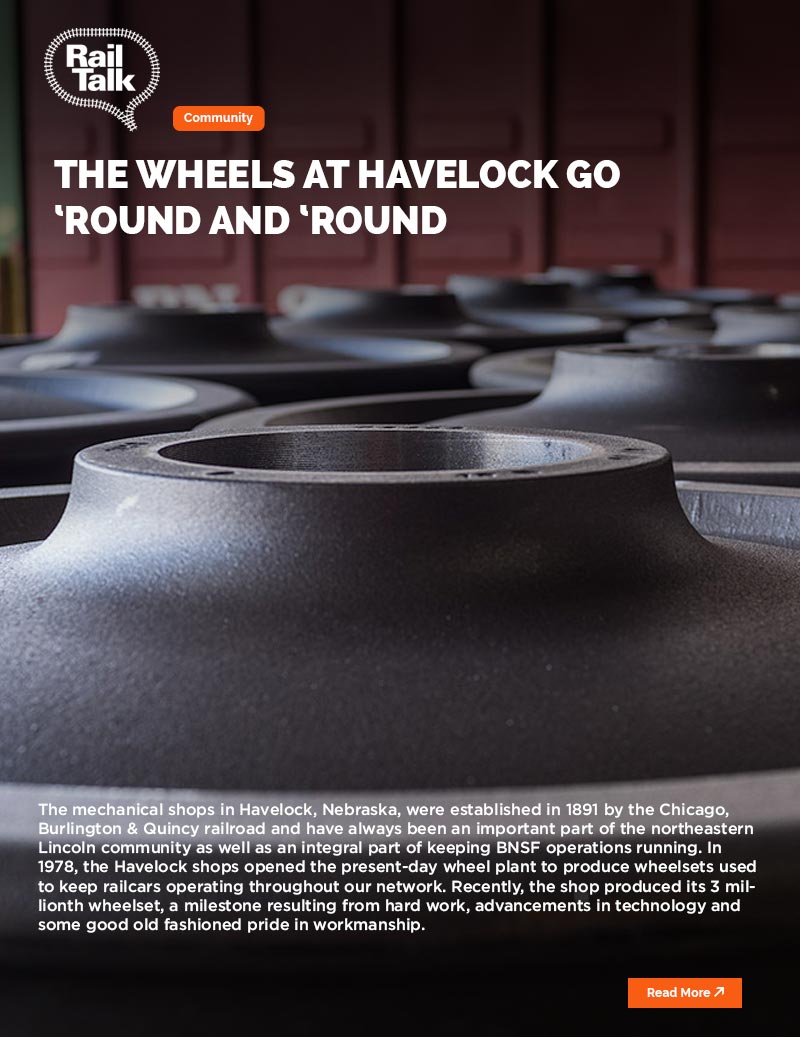Efficiency
At BNSF, we consistently invest in our network to enhance its efficiency, and we continuously look for ways to control costs and increase the value our railway delivers.
BNSF is always analyzing new technologies that we can adapt to improve the efficiency, safety and customer service at our intermodal facilities.
We also aim to establish a new generation of environmentally-friendly locomotives that can boost efficiency and reduce cost.
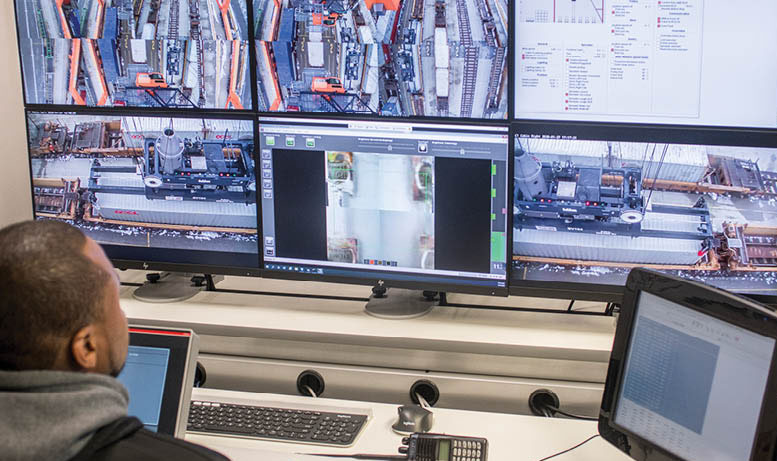
Improving Efficiency at Intermodal Hubs
BNSF is always looking for new technologies that we can use to enhance the efficiency, safety and customer service at our intermodal facilities. Below are a few examples.
Automating Yard Checks at Alliance
BNSF has completed the transition from manual to automated yard checks at our Alliance Intermodal Facility in the Dallas-Fort Worth area. Deploying image analytics and machine learning, we are able to keep track of our yard inventory in a much more efficient way, yielding significant improvements in cost, time and fuel consumption.
Automated Yard Check:
Uses a network of approximately 40 cameras
Provides real-time visibility to thousands of containers, trailers and chassis over hundreds of acres
Machine learning allows the system to keep an account of containers, trailers and chassis as well as their parking locations
Parking locations are now updated in less than 20 minutes at our Alliance Intermodal Facility vs. previous manual lag time of up to six hours.
Piloting Automation at LPKC
In 2019, BNSF began implementing an “attended automation” pilot on the east end of our Logistics Park Kansas City (LPKC) Intermodal Facility that would be used to test capabilities for automated straddle carriers (autostrads) that interface with production cranes and drivers and are attended by remote operators. The autostrads module at LPKC moved from the pilot phase to production in 2020.
Autostrads will allow us to complete horizontal movements, placing and stacking containers at BNSF intermodal facilities more efficiently and more safely.
Innovative Cranes at Corwith and Alliance
At our Corwith Intermodal Facility in Chicago we added an additional Cantilevered Rubber-Tired Gantry Crane, bringing our total at that location and at our Alliance Intermodal Facility to three each. These innovative cranes, the first of their kind in the world, combine the benefits of modern wide-span rail-mounted gantry cranes with those of more traditional rubber-tired gantry cranes. The cantilever design and overall height enable BNSF to significantly increase lift capacity and improve operational efficiency.
Testing Tomorrow’s Locomotive Today
In addition to shorter-term cost-saving measures, BNSF is looking to develop the next generation of locomotives to reduce our environmental impact, increase our fuel efficiency and lower our operational costs.
We are currently developing a prototype 100-percent battery-electric locomotive, along with Wabtec and assisted by a grant from the California Air Resources Board.
In 2020, we will install a charger for battery-electric locomotives at our Mormon Yard in Stockton, California.
We plan to test the battery-electric locomotive between Stockton and Barstow, California, in the coming years. After being initially charged in Stockton, the locomotive will provide additional regenerative power through dynamic braking.
While on the main line, the battery-electric locomotive will be combined with diesel locomotives to power the train. In the yard, however, the diesel locomotives can be powered down so the train will be pulled only by the battery-electric locomotive. BNSF expects that even when running with diesel locomotives, the fuel economy for the entire consist will significantly improve and the environmental impact from emissions will be significantly reduced with the battery-electric locomotive.
Early indications suggest battery-electric hostlers to be three times more energy efficient than diesel-powered hostlers.
BNSF is also testing next-generation cargo-handling equipment in California at our San Bernardino, Hobart and Stockton intermodal facilities including:
Battery-Electric Hostlers
Battery-Electric Forklifts
Battery-Electric Drayage Trucks
Hybrid-Electric Rubber-Tired Gantry Cranes
Bots Do Lots
To increase internal efficiency, BNSF is deploying robotic process automation (RPA) to perform thousands of repetitive tasks in multiple departments, including Finance, Human Resources, Labor Relations and Law.
RPA is a form of automation wherein software robots – or bots – are capable of sorting through redundant tasks, freeing BNSF personnel to handle more complex or critical assignments. So far, BNSF has put more than 50 bots in production.

